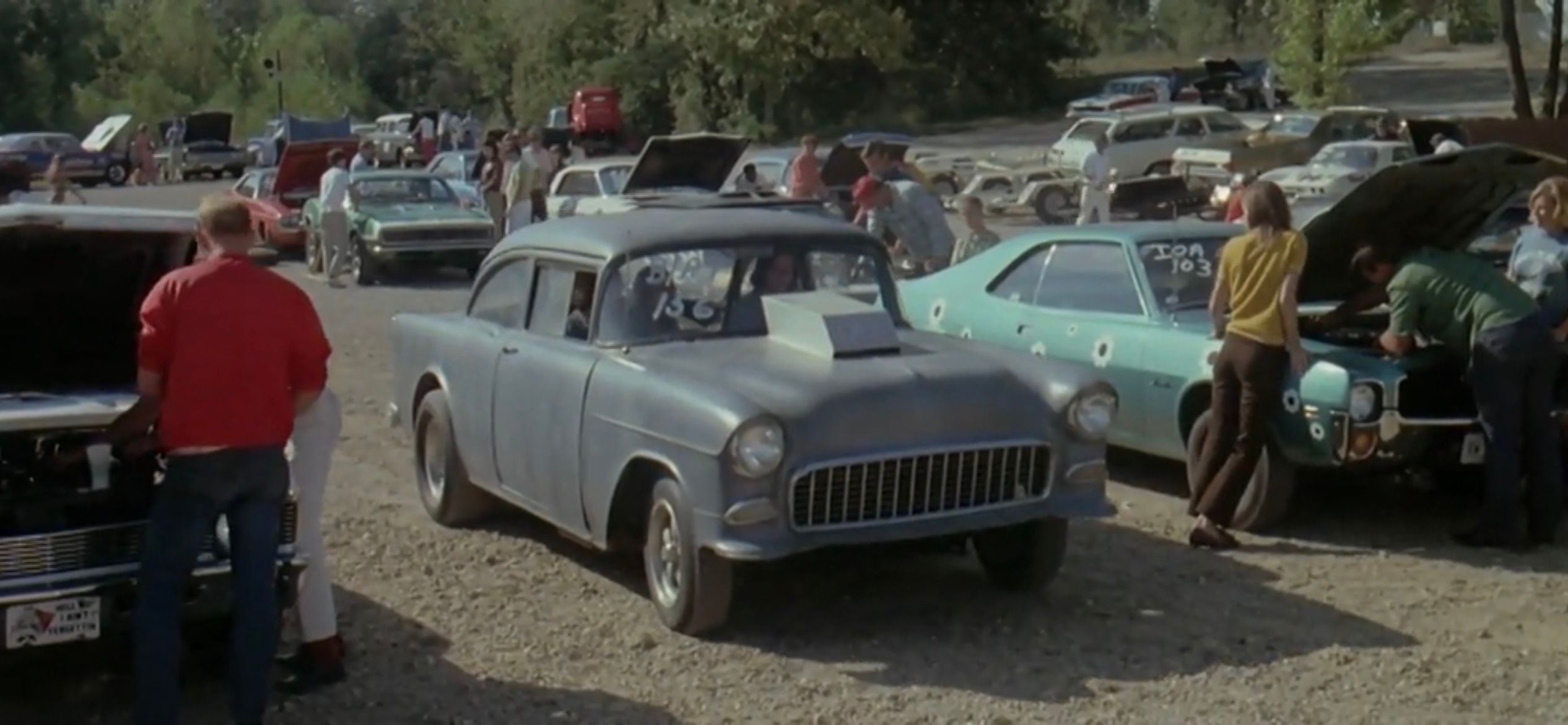Two-Lane Blacktop remains one of the most underrated and lesser known films within the automotive community, but for over 50 years, has entranced audiences with its existential perspective on car culture and drag racing during the early 1970s. Although the film was never a commercial success, it's been critically hailed for decades and has achieved cult status among notable car movies.
Still, Two-Lane Blacktop remains a forgotten treasure, and also contains the only starring film roles for musicians James Taylor and Dennis Wilson. The duo play the main characters, known only as "The Driver" and "The Mechanic," contributing to an interesting trend shown throughout the movie. The heavily modified 1955 Chevrolet 150 featured throughout Two-Lane Blacktop steals almost every scene that it's in, which amasses to nearly the entire feature. Even after filming, this unique Chevy would go on to live an extraordinary life.
Why Two-Lane Blacktop Stands Out Among Other Car Films
When it comes to automotive cinema in the modern world, the Fast & Furious series unfortunately tends to dominate this genre. Even before the ridiculousness of the modern installments of the series, the earlier films still had a habit of severely misguiding viewers with frequent misunderstandings of cars in general. In a direct contrast, Two-Lane Blacktop shines because of its attention to detail and an overall sense of realism that escapes most car films, especially in technical details regarding the machinery featured.
The film's plot is as thin as the fiberglass deck lid on the Chevy, and even though the dialogue isn't exactly frequent, Two-Lane Blacktop's overall accuracy on its cars' technical specs is far more on point than your typical car movie. The racing and stunt sequences are also very realistic, lacking the need for any editing tricks or the frequent camera-changing in the Fast & Furious series that inevitably results when any given character needs to change gears or simply blink.
The primary reason for this is that the film's screenwriter, Rudy Wurlitzer, was an avid gearhead and made sure that these details got reflected in the screenplay. Furthermore, Wurlitzer also added additional elements that didn't make it to the final feature, including mentions of a 427 ci-powered Ford and a Volkswagen Beetle packing an unspecified Porsche engine, which were both cars used by the main characters prior to the events of Two-Lane Blacktop. Wurlitzer also added in specific, mechanical details on the '55 Chevy itself, to ensure that the cars used in the film would reflect the overall, realistic vibe that he was attempting to transcend via his screenplay.
What Makes This '55 Chevy Unique
In order for Two-Lane Blacktop to function the way the screenplay originally intended, the main car necessitated a severe transformation from a mundane cruiser into the drag-racing monster shown in the final feature. Three 1955 Chevrolet 150s got used, which was the brand's absolute base model for that year. All three models received modifications by Richard Ruth for this project, and included an extensive list of custom touches to ensure that the cars were as fast in real life as they were on the screen. Unlike an average car-chase movie, Two-Lane Blacktop's main focal point had been drag racing, both on the streets and the strip. Consequently, the cars used for the production would necessitate some outstanding upgrades to do the job.
Ruth's modifications to the cars were staggering. The changes in drivetrain included swapping in a tunnel-rammed, 454 ci V8, dual four-barrel carburetors mounted upon a high-rise Weiand intake manifold, an M22 Muncie four-speed transmission, and an Oldsmobile Positraction rear-end with 4.88 gears.
The cars' bodywork also underwent significant changes for added performance. Fiberglass was extensively used for the doors, rear deck lid, and the entire front clip hinged, to tilt forward for easier access to the engine bay. The front bumper came off to reduce weight and improve balance. A distinct, raw metal hood scoop was also added to house the carbs atop the massive intake manifold. Unfortunately, power outputs were never recorded, although the cars were said to be capable of running 10-second quarter miles. Two of the three cars utilized straight-axles up front, which were then fabricated by Ruth solely for this project.
The Fate Of The Two-Lane Blacktop '55 Chevy
After the film's release in 1971, Universal Studios retained all three cars for a few years. When George Lucas set about creating his 1973 film, American Graffiti, Universal had re-purposed two of the Chevy dragsters from Two-Lane Blacktop to play the part of a 1955 Chevy driven by Harrison Ford's character, Bob Falfa. Of the two, the original stunt car would become destroyed during the rollover scene in the film's finale. The surviving version was ultimately restored, although featuring the black paint and other unique touches associated with American Graffiti, rather than the car's former, primer-gray appearance in Two Lane Blacktop. After American Graffiti wrapped, these cars were ultimately sold off to the public, along with several others from the film.
The third car, used primarily for interior shots, was discovered in 2001 by Walt Bailey. After Richard Ruth verified its authenticity, Bailey set about restoring the '55 Chevy back into its Two-Lane Blacktop incarnation. After years of restoration, the completed car was eventually auctioned off at Barrett-Jackson in 2015, where it sold for $145,000.

-copy.jpg)
.JPG)

.JPG)